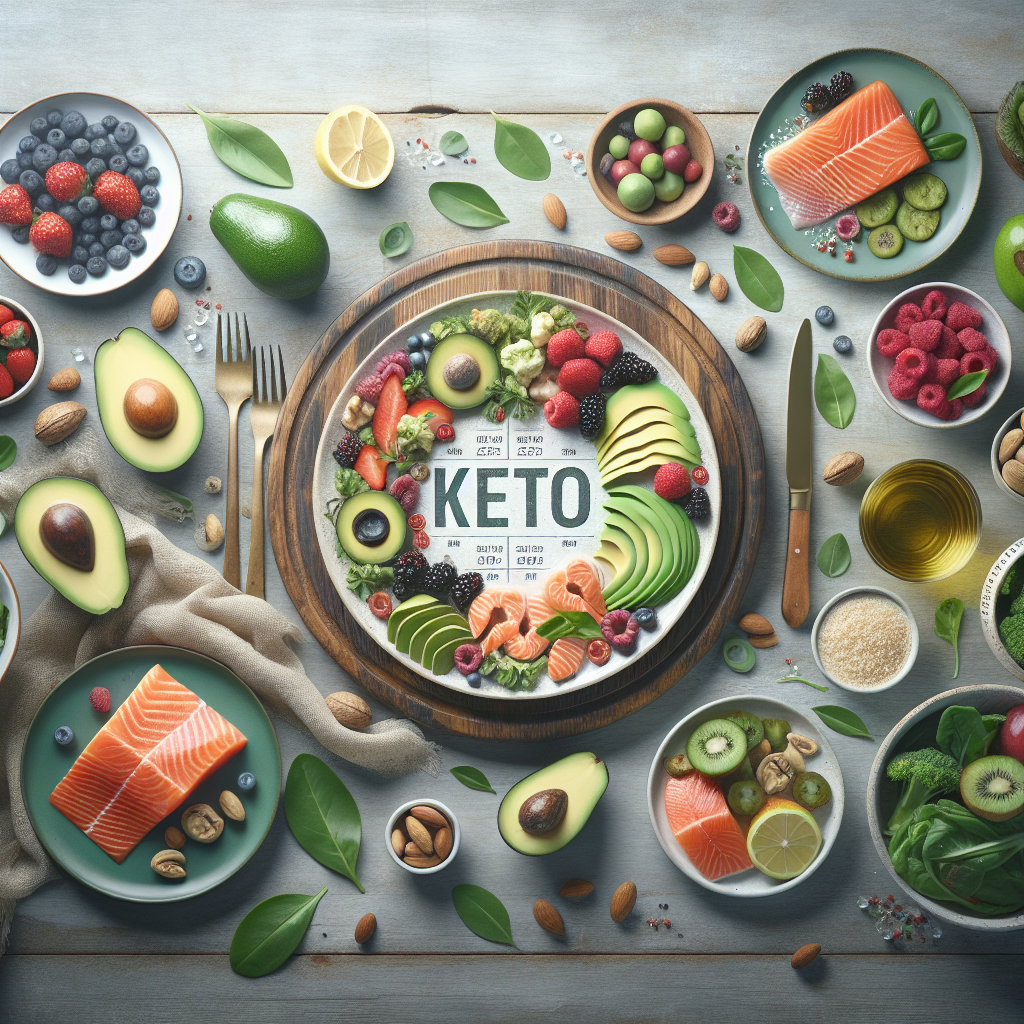Delicious Low-Calorie Keto Meals for Weight Loss
Introduction to the Keto Diet
The ketogenic diet, often referred to as the keto diet, has become an immensely popular method for weight loss and overall health improvement. The diet involves reducing carbohydrate intake and replacing it with fat, which puts your body into a metabolic state called ketosis. While the main focus of the keto diet is on high-fat foods, it is still possible—and beneficial—to incorporate low-calorie options to optimize weight loss and maintain nutritional balance.
Understanding the Keto Diet’s Mechanism
The keto diet works by shifting the body’s energy source from carbohydrates to fats, leading to the production of ketones in the liver. This process is called ketosis. When in ketosis, the body becomes incredibly efficient at burning fat for energy, which can lead to significant weight loss. Additionally, the diet can help reduce blood sugar and insulin levels, offering further health benefits.
The Importance of Low-Calorie Meals in Keto
While the primary principle of the keto diet is high-fat consumption, integrating low-calorie meals can be crucial for those aiming for weight loss. Consuming fewer calories than you burn leads to weight loss. Thus, low-calorie keto meals can help achieve a caloric deficit without compromising the state of ketosis. This balance ensures that weight loss is both effective and sustainable.
Delicious Low-Calorie Keto Meal Ideas
1. Zucchini Noodles with Pesto and Grilled Chicken
Zucchini noodles, often called zoodles, are a fantastic low-calorie substitute for traditional pasta. Pair them with a rich basil pesto and grilled chicken for a delicious, filling meal that’s keto-friendly.
– **Ingredients**: Zucchini, basil pesto, grilled chicken breast, olive oil, garlic, Parmesan cheese.
– **Instructions**: Spiralize the zucchini and sauté in olive oil for 2-3 minutes. Add the grilled chicken, toss with pesto, and top with Parmesan.
2. Cauliflower Fried Rice
Cauliflower is a versatile vegetable that can substitute rice, bringing down the calorie count significantly. This dish is not only low in calories but also rich in flavor.
– **Ingredients**: Cauliflower, eggs, green onions, soy sauce, ginger, garlic, sesame oil, mixed vegetables.
– **Instructions**: Grate the cauliflower into rice-like pieces. Sauté garlic and ginger in sesame oil, add cauliflower, and cook until tender. Push to one side, scramble the eggs on the other, mix with vegetables and soy sauce.
3. Avocado and Shrimp Salad
This refreshing salad combines creamy avocado with succulent shrimp, offering a nutritious and satisfying meal that is perfect for a light lunch or dinner.
– **Ingredients**: Shrimp, avocado, mixed greens, cherry tomatoes, lime juice, olive oil, salt, pepper.
– **Instructions**: Grill or sauté shrimp until pink. Toss with diced avocado, greens, and tomatoes. Drizzle with lime juice and olive oil, season to taste.
4. Creamy Broccoli Soup
A warm bowl of broccoli soup can be both comforting and low in calories. By using cream cheese instead of heavy cream, you maintain the creaminess without the extra calories.
– **Ingredients**: Broccoli, chicken broth, cream cheese, garlic, onion, salt, pepper.
– **Instructions**: Cook chopped broccoli, garlic, and onion in chicken broth until tender. Puree in a blender, return to pot, stir in cream cheese until melted.
5. Keto Egg Muffins
Egg muffins are a convenient and customizable meal option. They are low in calories and can be packed with your choice of keto-friendly vegetables and meats.
– **Ingredients**: Eggs, spinach, bell peppers, bacon, cheese, salt, pepper.
– **Instructions**: Beat eggs, mix with chopped spinach, bell peppers, and cooked bacon. Pour into muffin tins, sprinkle cheese on top, bake until set.
Tips for Creating Low-Calorie Keto Meals
Emphasize Non-Starchy Vegetables
Non-starchy vegetables like spinach, kale, and broccoli are low in calories and carbohydrates, making them ideal for keto meals. They are also packed with essential vitamins and minerals.
Incorporate Lean Proteins
While the keto diet emphasizes fat, incorporating lean proteins such as chicken breast, turkey, and fish can help reduce calorie intake while maintaining satiety and muscle mass.
Use Healthy Fats Wisely
Healthy fats are crucial on the keto diet, but portion control is important to keep calorie counts in check. Opt for fats like olive oil, avocados, and nuts, and use them in moderation.
Avoid Processed Keto Foods
While there are many keto-branded snacks and foods, they can be high in calories and low in nutritional value. Focus on whole, unprocessed foods to ensure you’re getting the most nutrients for your caloric intake.
Benefits of Low-Calorie Keto Meals
Integrating low-calorie meals into your keto diet can lead to more effective weight loss. It helps in creating a caloric deficit, which is essential for losing weight. Additionally, it can improve metabolic health by reducing insulin levels and inflammation. Consuming nutrient-dense, low-calorie foods also ensures that your body receives essential vitamins and minerals, supporting overall health and well-being.
Conclusion
The keto diet offers a unique approach to weight loss by utilizing the body’s natural metabolism of fats. By incorporating low-calorie meals into this high-fat diet, individuals can enhance their weight loss efforts while still enjoying delicious and satisfying meals. The key is to focus on nutrient-dense foods, balance healthy fats, and maintain portion control. With the right approach, keto can be a sustainable and enjoyable way to achieve your weight loss and health goals.















Add comment